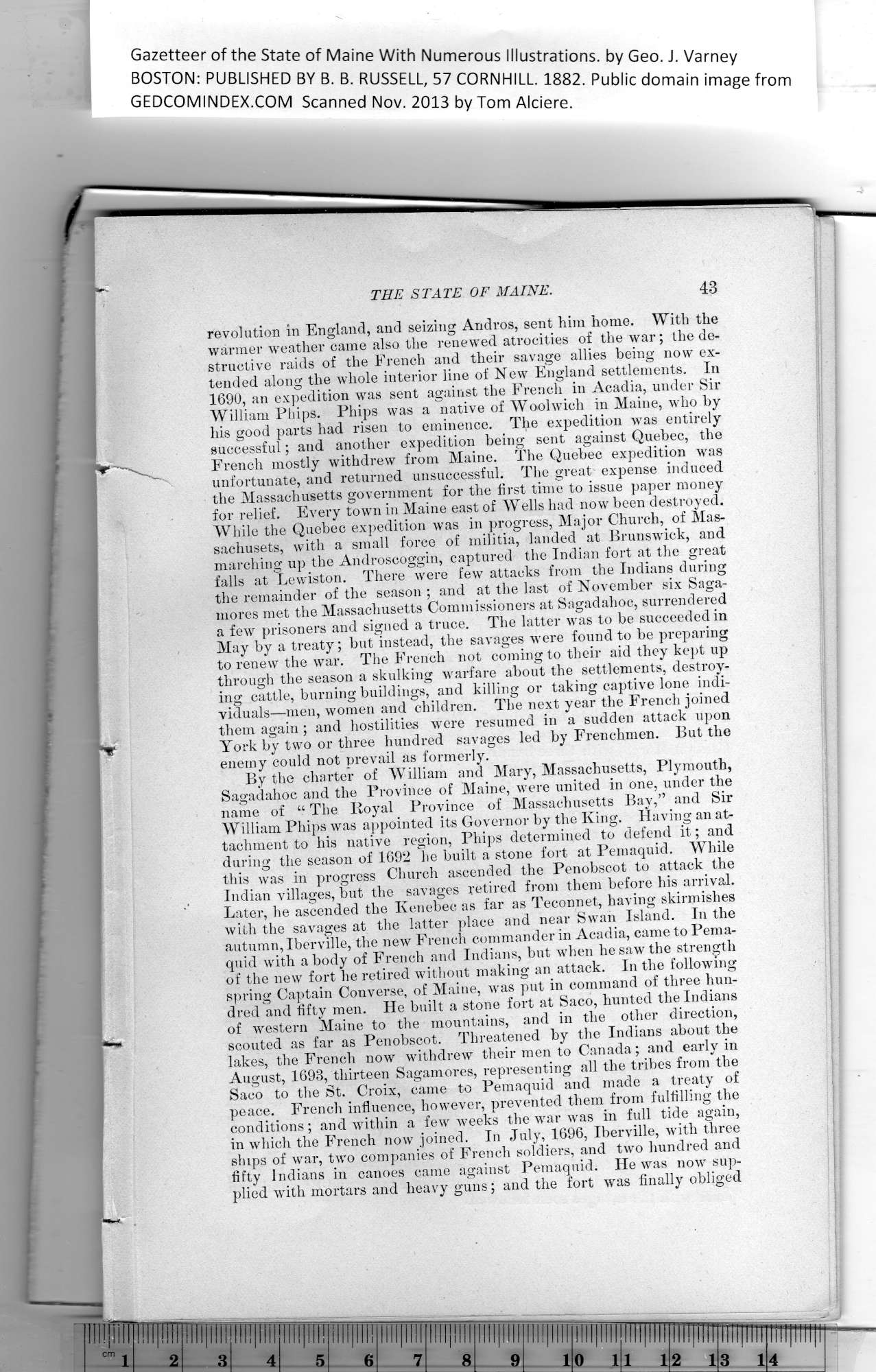|
THE STATE OF MAINE.
revolution in England, and seizing Andros, sent him home. With the
warmer weather came also the renewed atrocities of the war; the de-
structive raids of the French and their savage allies being now ex-
tended along the whole interior line of New England settlements. In
1690, an expedition was sent against the French in Acadia, under Sir
William Phips. Phips was a native of Woolwich in Maine, who by
his good parts had risen to eminence. The expedition was entirely
successful; and another expedition being sent against Quebec, the
French mostly withdrew from Maine. The Quebec expedition was
unfortunate, and returned unsuccessful. The great expense induced
the Massachusetts government for the first time to issue paper money
for relief. Every town in Maine east of Wells had now been destroyed.
While the Quebec expedition was in progress, Major Church, of Mas-
sachusets, with a small force of militia, landed at Brunswick, and
marching up the Androscoggin, captured the Indian fort at the great
falls at Lewiston. There were few attacks from the Indians during
the remainder of the season ; and at the last of November six Saga-
mores met the Massachusetts Commissioners at Sagadahoc, surrendered
a few prisoners and signed a truce. The latter was to be succeeded in
May by a treaty; but instead, the savages were found to be preparing
to renew the war. The French not coining to their aid they kept up
through the season a skulking warfare about the settlements, destroy-
ing cattle, burning buildings, and killing or taking captive lone indi-
viduals—men, women and children. The next year the French joined
them again ; and hostilities were resumed in a sudden attack njion
York by two or three hundred savages led by Frenchmen. But the
enemy could not prevail as formerly.
By the charter of William and Mary, Massachusetts, Plymouth,
Sagadahoc and the Province of Maine, were united in one, under the
name of “ The Royal Province of Massachusetts Bay,” and Sir
William Phips was appointed its Governor by the King. Having an at-
tachment to his native region, Phips determined to defend it; and
during the season of 1692 he built a stone fort at Pemaquid. While
this was in progress Church ascended the Penobscot to attack the
Indian villages, but the savages retired from them before his arrival.
Later, he ascended the Kenebee as far as Teconnet, having skirmishes
with the savages at the latter place and near Swan Island. In the
autumn, Iberville, the new French commander in Acadia, came to Pema-
quid with a body of French and Indians, but when he saw the strength
of the new fort he retired without making an attack. In the following
spring Captain Converse, of Maine, was put in command of three hun-
dred and fifty men. He built a stone fort at Saco, hunted the Indians
of western Maine to the mountains, and in the other direction,
scouted as far as Penobscot. Threatened by the Indians about the
lakes, the French now withdrew their men to Canada; and early in
August, 1693, thirteen Sagamores, representing all the tribes from the
Saco to the St. Croix, came to Pemaquid and made a treaty of
peace. French influence, however, prevented them from fulfilling the
conditions; and within a few weeks the war was in full tide again,
in which the French now joined. In July, 1696, Iberville, with three
ships of war, two companies of French soldiers, and two hundred and
fifty Indians in canoes came against Pemaquid. He was now sup-
plied with mortars and heavy guns; and the fort was finally obliged
PREVIOUS PAGE ... NEXT PAGE
This page was written in HTML using a program written in Python 3.2
|
